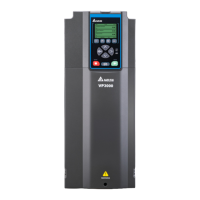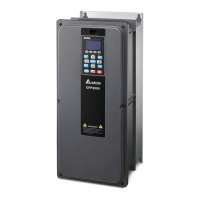Chapter 7 Second Development PlatformVP3000
273
Auxiliary Relay
Like an output relay Y, an auxiliary relay M has an output coil and contacts A and B, and the
number of times they can be used in a program is unrestricted. Users can use an auxiliary relay M to
configure the control circuit, but cannot use it to directly drive an external load. Auxiliary relay is
divided into two types according to its characteristics, see the following content:
General type: for this type of auxiliary relay, the state returns to OFF if power outage occurs in
PLC operation, it’s still OFF even power ON again.
Special type: each special-purpose auxiliary relay has its own specific use. Do not use any
undefined special purpose auxiliary relays
Timer
The unit of the timer is 100 ms, and the counting method is counting up. When the current value in
the timer equals the setting value, the associated output coil is conducted. The setting value should be
a K value in decimal and can be specified by the content of data register D.
The actual setting time of the timer = the unit of timer x setting value
Counter
If the counting pulse input signals of the counter are OFFON, when the current value in the
counter equals the setting value, the associated output coil is conducted. The setting value should be
a K value in decimal and can be specified by the content of data register D.
16-Bit counter C0–C79:
The setting range of 16-bit counter: K0–K32,767. (K0 and K1 are identical, their output contacts
are conducted immediately at the first counting)
For general type counter, the current value is cleared when a power failure occurs in PLC.
If a value greater than the setting value is transmitted to the register of C0 current value by using
MOV instruction or WPLSoft, when X1 is OFFON in the next time, the contact of C0 counter
becomes ON, and the current value becomes the same as the setting value.
The setting value of counter can be set by using constant K directly, or by using the numeral value
of register D (data register D1000–D1199 and D2000–D2799 are not included) indirectly.
The setting value can only be positive if the constant K is used, and the setting value can be a
positive or negative if the data register D is used. The current value changes from 32,767 to -32,768
as the counting continues to accumulate.
Features of Counter
Item 16-bit counter
Type General
Counting direction Counting up
Setting value 0–32,767
Designation of
setting value
Constant K or data register D
Change of the
current value
The counting stops when it reaches the setting value.
Output contacts The output contacts conduct and remain when the counting reaches the setting value.
Reset
The current value returns to zero when RST instruction is executed, and the contacts
are also reset to OFF.
Action of contacts Act at the end of the scanning.

